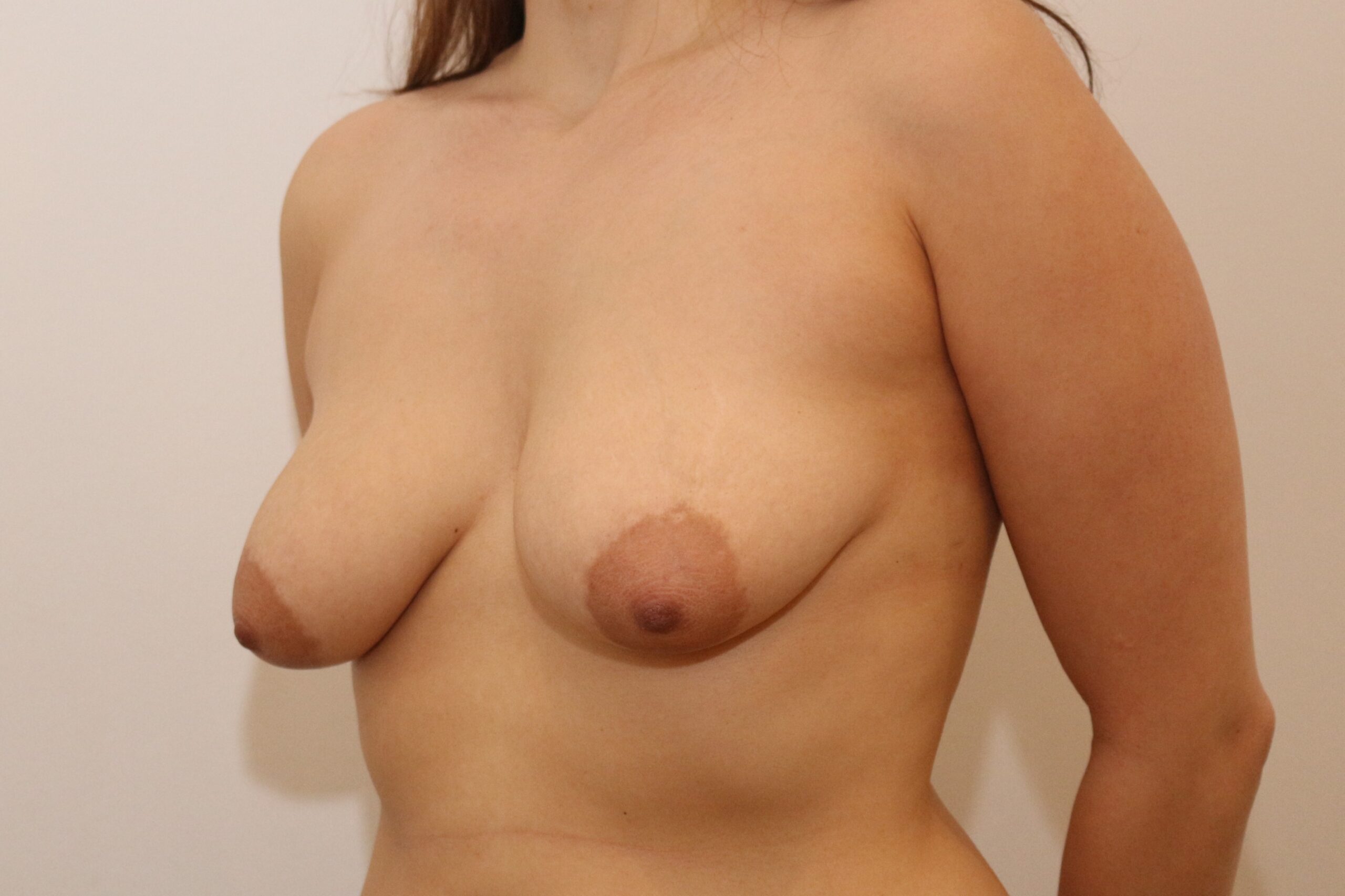
Tubular breasts
What are tuberous breasts?
Tuberous breasts exhibit a common breast malformation: the anomaly of the breast's implantation base, which is narrow.
The breast implantation base is the area of the chest on which the breast rests and from which the mammary gland develops.
In the case of tuberous breasts, the anomaly in the growth of the mammary gland during puberty will lead to its development primarily forward and very little at the periphery of the breast, resulting in a final shape resembling a tubercle (tubular shape).
There is always a mammary hypotrophy. Breast augmentation is the central focus of the treatment.
The components that characterize tuberous breasts:
- An absent lower quadrant of the breast leading to a submammary fold that is positioned too high.
- A areolar-nipple complex, often very large, frequently presenting a herniated appearance as it protrudes forward from the breast.
- A lack of breast volume (mammary hypotrophy).
- A breast asymmetry is frequently observed.
- Stretch marks are regularly present.
Classification of tuberous breasts
A classification into 4 grades has been established. It differentiates various degrees of malformation based on the involvement of the segments of the tuberous breast.
Grade I: The infero-internal quadrant is underdeveloped, and the areola faces downward and inward. The submammary fold forms an S shape.
Grade II: The gland of the entire lower quadrant is not sufficiently developed. The areola faces forward. The mammary gland has formed only towards the upper quadrant, but there is development of the subareolar skin.
Grade III: The entire lower quadrant is not developed. The areola faces downward. The breast has formed only towards the upper quadrant.
Grade IV: Complete tuberous shape with a significantly narrowed breast implantation base. The gland development is insufficient and occurs primarily forward, not laterally.
Both breasts are often tuberous but may be of different grades.
Surgical treatment of tuberous breasts
It is important to understand that this is a true reconstructive surgery of the breast, due to the lack of skin envelope, the anomaly of position and size of the areolar-nipple complex, and the glandular hypotrophy that will need to be addressed.
Objectives of the intervention for tuberous breasts
- Increase the volume of the breast
- Widen its implantation base
- Give it a rounded and harmonious shape
- Create a new, softer, and lower fold
- Reposition and possibly reduce the areola
Surgical technique for correcting tuberous breasts
The overall principle of the intervention is breast augmentation using implants combined with glandular expansion surgery through internal radial incisions.
The type of skin surgery breast lift will be discussed based on the need to reduce and/or reposition the areola or based on the excess anterior development of the skin envelope.
A mammary lipofilling at the same time, or deferred, will be considered to optimize the peripheral reconstruction of the subcutaneous tissue and improve the overall contour of the breast. It will help widen the breast's implantation base, cover the prosthesis, and provide flexibility and quality to the skin.
Results of tuberous breast surgery
The surgical improvement is significant given the initial malformation, which can sometimes be very psychologically disabling.
The most challenging aspect is creating a new submammary fold with a well-contoured and rounded lower quadrant.
Sometimes, the old fold remains visible as a notch that crosses the lower part of the breast. A secondary lipofilling will be useful in such cases.
The herniation of the areola may not always be corrected during the first intervention.
It is therefore common to propose two surgical stages to achieve the restructuring of a beautiful breast.
Management of the breast augmentation intervention for tuberous breasts
It will be systematically requested, being justified by asymmetry, hypotrophy, or the extent of the breast deformation. It will generally be accepted except in minor forms with normal breast volume.
The surgical treatment of tuberous breasts in practice:
-
“Before” breast augmentation for tuberous breasts
- You will have had 2 preoperative consultations and an anesthesia consultation
- A prior agreement file with your health insurance will be prepared and sent
- Preoperative photos will be taken
- Breast ultrasound +/- mammography
- Signing of legal documents including detailed information about your intervention, an estimate, and informed mutual consent
- The choice of the prosthesis will be finalized with your plastic surgeon
-
“During” breast augmentation for tuberous breasts
- Under systematic general anesthesia
- Outpatient hospitalization or a maximum of 24 hours
- A compressive dressing is applied
- No drain is usually placed
-
“After” breast augmentation for tuberous breasts
- A minimum rest period of 5 days is planned
- You will receive a detailed prescription
- Pain will be managed with systematic analgesics
- The first dressing will be done at 24 hours
- A non-underwired bra will be worn for 2 months
- A breast binder will be placed and worn 24/7 for a minimum of 3 weeks
- Swelling and bruising will form and intensify over a few days
- Two postoperative follow-up appointments are scheduled at 1 and then 3 weeks
- You are not authorized to lift weights for 3 weeks
- Your plastic surgeon is available 24/7 on their mobile phone
-
“At a distance” from breast augmentation for tuberous breasts
- Softness and volume stabilized at 3 months
- The result will be evaluated at 6 months to schedule a possible new surgical stage
- Sensitivity will slowly return over several weeks; it may be permanently reduced in some areas
- Regular check-ups throughout life are necessary
